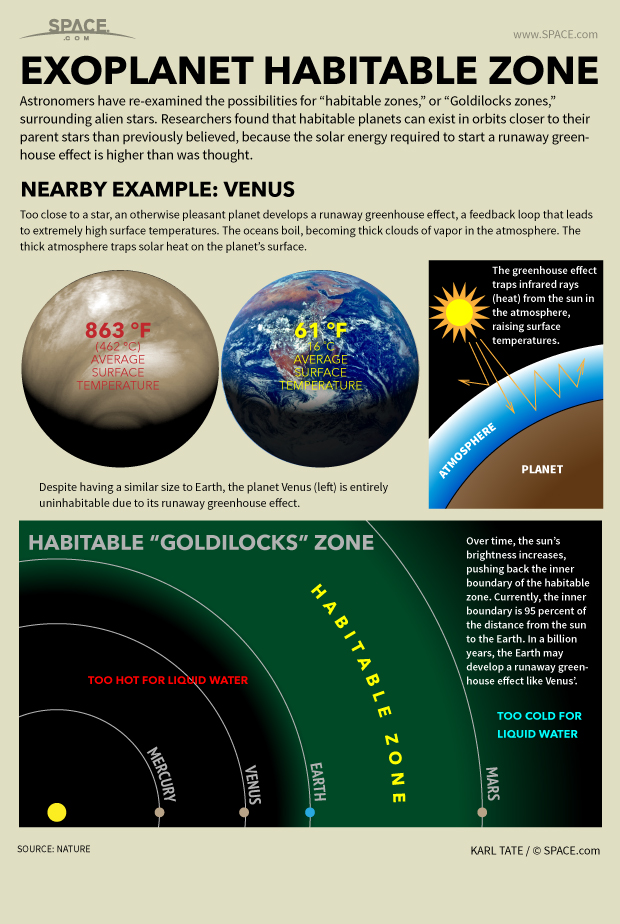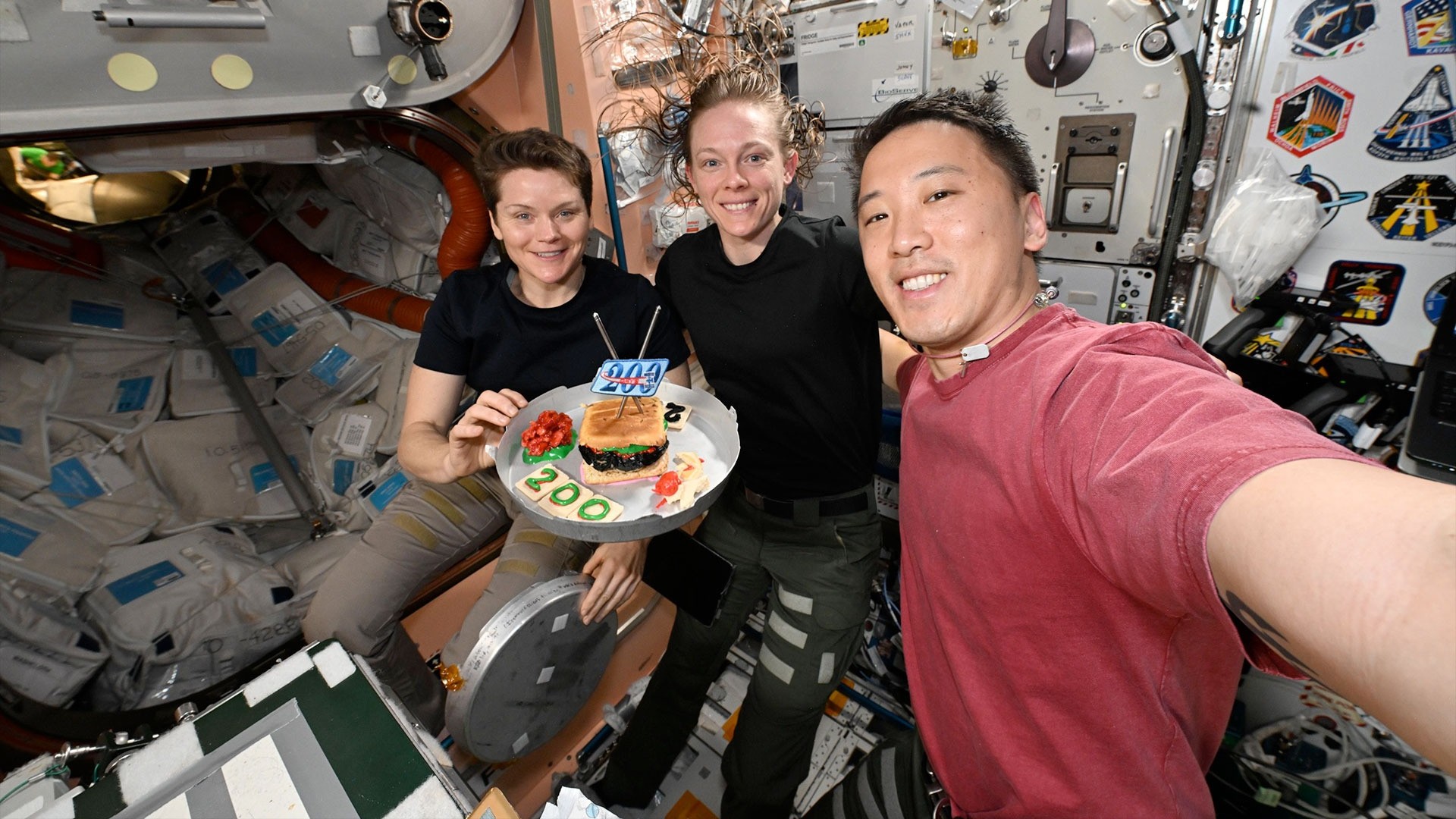How Habitable Zones for Alien Planets and Stars Work (Infographic)

Astronomers have re-examined the possibilities for "habitable zones," or "Goldilocks zones," surrounding alien stars. Researchers found that habitable planets can exist in orbits closer to their parent stars than previously believed, because the solar energy required to start a runaway greenhouse effect is higher than was thought.
Full Story: Exoplanet Habitable Zone Around Sunlike Stars Bigger Than Thought
Too close to a star, an otherwise pleasant planet develops a runaway greenhouse effect, a feedback loop that leads to extremely high surface temperatures. The oceans boil, becoming thick clouds of vapor in the atmosphere. The thick atmosphere traps solar heat on the planet’s surface. [9 Exoplanets That Could Host Alien Life]
The greenhouse effect traps infrared rays (heat) from the sun in the atmosphere, raising surface temperatures. Despite having a similar size to Earth, the planet Venus is entirely uninhabitable due to its runaway greenhouse effect.
Breaking space news, the latest updates on rocket launches, skywatching events and more!
Over time, the sun’s brightness increases, pushing back the inner boundary of the habitable zone. Currently, the inner boundary is 95 percent of the distance from the sun to the Earth. In a billion years, the Earth may develop a runaway greenhouse effect like Venus'.
Gallery: A World of Kepler Planets
Join our Space Forums to keep talking space on the latest missions, night sky and more! And if you have a news tip, correction or comment, let us know at: community@space.com.

Karl's association with Space.com goes back to 2000, when he was hired to produce interactive Flash graphics. From 2010 to 2016, Karl worked as an infographics specialist across all editorial properties of Purch (formerly known as TechMediaNetwork). Before joining Space.com, Karl spent 11 years at the New York headquarters of The Associated Press, creating news graphics for use around the world in newspapers and on the web. He has a degree in graphic design from Louisiana State University and now works as a freelance graphic designer in New York City.
